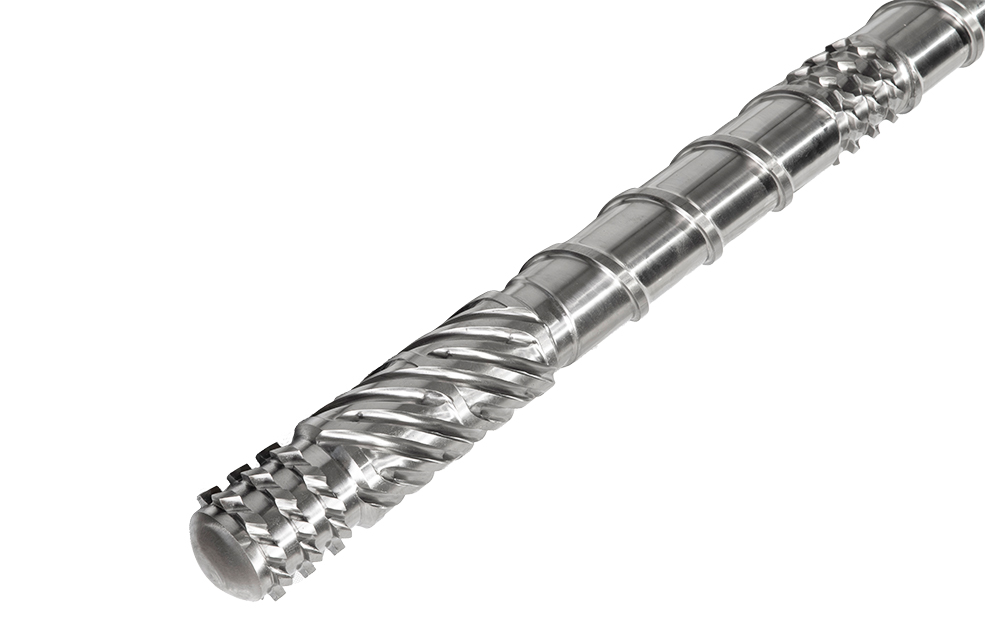

The injection screw is working for a long time under hi […]
The injection screw is working for a long time under high temperature, high pressure, high mechanical torque and high friction environment. The first few factors are required by the process conditions, and the loss caused by friction is inevitable. Generally, screws have undergone surface nitriding treatment to increase surface hardness, that is, to improve wear resistance. However, if the cause of wear is ignored and the wear is not minimized, the working life of the single screw barrel will be greatly reduced.
The following describes the causes of screw wear and methods to reduce wear
1. Every plastic has an ideal plasticizing processing temperature range, and the processing temperature of the barrel should be controlled to make it close to this temperature range. Granular plastic enters the barrel from the hopper and first reaches the feeding section. Dry friction will inevitably occur in the feeding section. When these plastics are not heated enough and melted unevenly, it is easy to increase the abrasion of the inner wall of the barrel and the surface of the screw. Similarly, in the compression section and the homogenization section, if the molten state of the plastic is disordered and uneven, it will also cause increased wear. To
2, the speed should be adjusted properly. Because some plastics are added with strengthening agents, such as glass fibers, minerals or other fillers. The friction of these substances on metal materials is often much greater than that of molten plastics. When injection molding these plastics, if they are made with a high rotation speed, it will increase the shearing force to the plastic, and at the same time, the reinforcement will produce more shredded fibers. The shredded fibers contain sharp ends, causing wear Power is greatly increased. When inorganic minerals slide on the metal surface at high speed, their scraping effect is not small. Therefore, the speed should not be adjusted too high.
